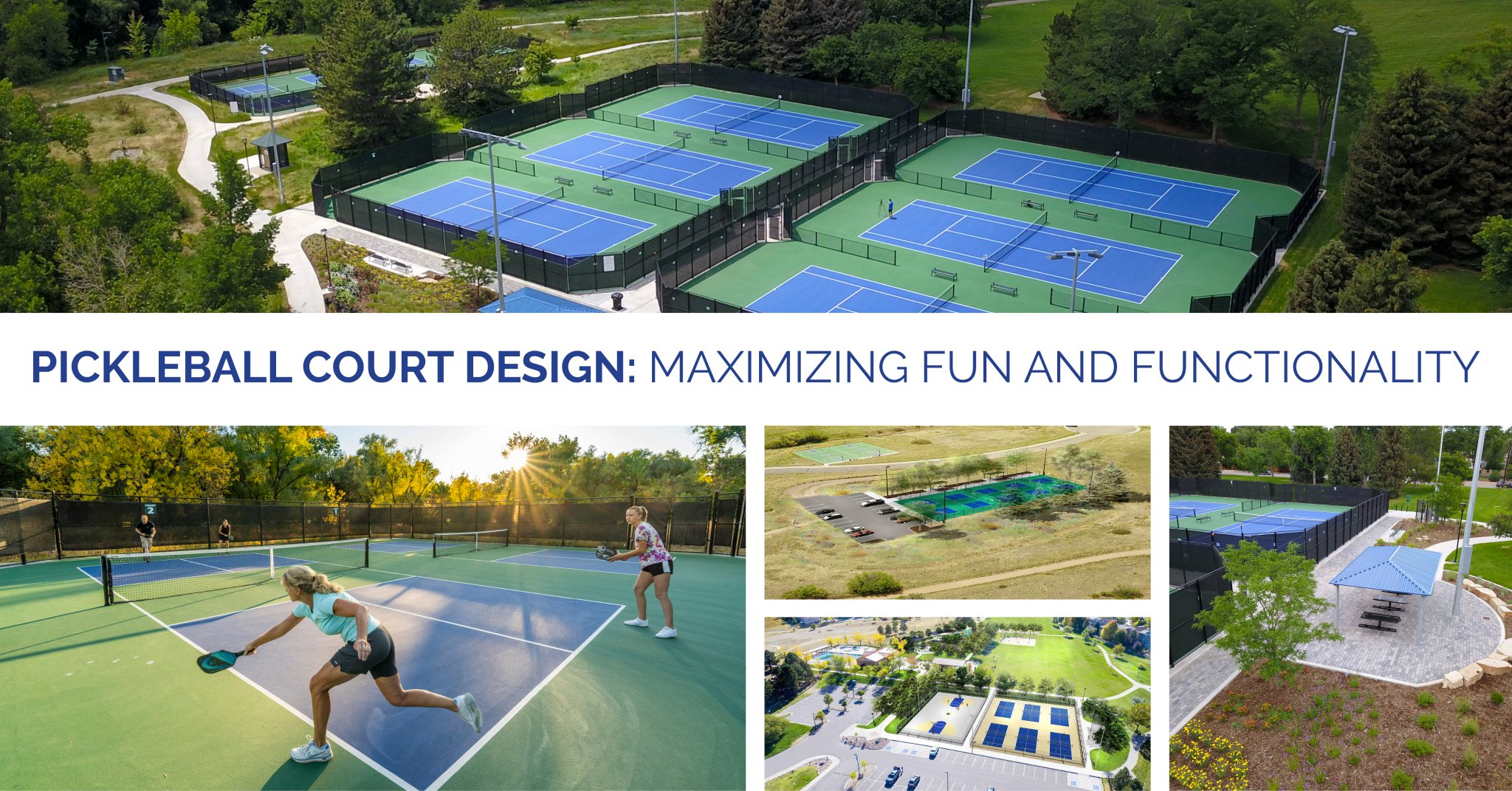Expert Pickleball Court Construction: Complete Solutions for Your Facility
Wiki Article
Discover the Finest Pickleball Court Layouts for Ideal Gameplay
Discovering the ins and outs of pickleball court layouts can considerably improve the gameplay experience for both novices and experienced players alike. With exact measurements, strategic color options for court lines, and ideal internet height, the setup of a pickleball court contributes significantly to the flow and strength of suits.
Criterion Pickleball Court Capacities
What are the standard measurements of a pickleball court that players must stick to when establishing up a suit? A regulation pickleball court determines 20 feet broad by 44 feet long for both singles and doubles play. The court is divided right into left and appropriate solution courts by a centerline, which is 20 feet from each sideline.Effect of Court Line Color Styles
The standard dimensions of a pickleball court play a basic function in shaping the game's framework and justness, and the choice of court line shades better enhances the playing experience by influencing exposure and court looks. When choosing shades for the court lines, it is crucial to think about elements such as contrast, brightness, and colorblindness to make certain optimum exposure for players of all ages and capacities. High-contrast shades like black, dark eco-friendly, or navy blue are often liked for outlining the borders of the court as they develop a clear distinction against the lighter playing surface area. Furthermore, utilizing bright and dynamic colors for the non-volley area or cooking area lines can help gamers swiftly determine these vital areas during fast-paced gameplay. Incorporating shade plans that complement the overall court layout can contribute to the aesthetic allure of the playing location, enhancing the total pickleball experience for players and viewers alike.Significance of Net Elevation
Reliable gameplay and player experience in pickleball are dramatically affected by the accurate law of web height (Pickleball court construction). The conventional web height for pickleball is 34 inches at the center and 36 inches at the sidelines. Maintaining this height is crucial to guarantee fair game and satisfying gameplay for all individualsA web set as well reduced can lead to much more effective knockouts and less critical play, preferring hostile players. Adhering to the defined web height is vital to promote a balance in between offensive and defensive methods, fostering an affordable yet delightful environment on the court.
Additionally, regular web elevation throughout different courts is essential for players to adjust their abilities and strategies effortlessly. Pickleball court construction. Gamers count on the uniformity of internet height to develop their techniques and improve their gameplay, highlighting the significance of preserving the suggested measurements for ideal pickleball experiences
Secret Functions of Side Fence
Provided the essential duty of net elevation in regulating gameplay dynamics, a just as vital aspect to consider in enhancing the general pickleball court setting is the key functions of side fence. Side secure fencing serves numerous crucial objectives in a pickleball court design. It supplies boundaries that assist define the having fun location, guaranteeing that the round stays within the court throughout gameplay, therefore minimizing interruptions. Furthermore, side secure fencing websites functions as a security obstacle, protecting against players from unintentionally tipping out of bounds and potentially obtaining injured. Additionally, the existence of side secure fencing can also help in reducing disturbances from exterior components, such as spectators or surrounding tasks, permitting players to focus better on their video game. When developing or selecting a pickleball court layout, it is vital to consider the product, height, and sturdiness of the side secure fencing to make sure optimum gameplay problems and general court looks. Sound side secure fencing improves the playing experience, promotes safety, and adds to an expert and orderly pickleball setting.Making Use Of Non-Volley Zone Successfully

One trick facet of using the Non-Volley Zone efficiently is understanding its calculated significance. By positioning oneself close to the cooking area line, gamers can place pressure on their challengers by limiting their capability to strike aggressive shots close to the internet (Pickleball court construction). This tactical positioning can force opponents right into making errors or weak returns, enabling players to preserve control of the game
Furthermore, players can utilize the Non-Volley Zone to establish offensive plays. By hitting shots that compel challengers to hit the sphere high and possibly into the original site Non-Volley Zone, gamers can relocate near to the net and execute winning shots. This strategic use the Non-Volley Zone can aid gamers dictate the rate of the video game and ultimately lead to success on the pickleball court.
Conclusion
Finally, understanding the conventional measurements of a pickleball court, the influence of court line colors, the value of internet elevation, pop over to this web-site essential features of side fence, and just how to utilize the non-volley area effectively are all necessary for ideal gameplay. By integrating these components right into your gameplay technique, you can enhance your general efficiency on the court and enhance your possibilities of success in pickleball suits.Report this wiki page